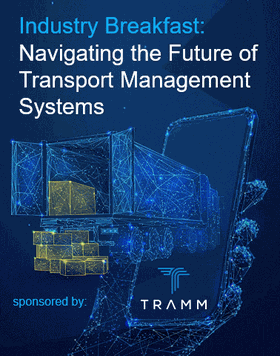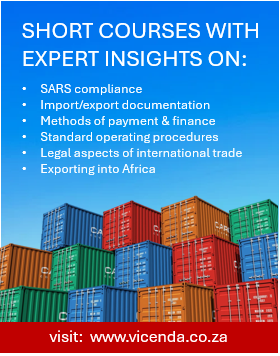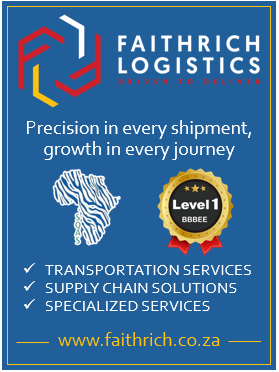One year since its formation, Netstar’s Global Fleet Bureau represents the largest and most technologically advanced vehicle telematics centre on the African continent. Beyond traditional managed services such as asset tracking and driver behaviour management, the bureau offers live monitoring through known hotspots, real-time fleet manager notifications, and live video monitoring via onboard cameras.
Over the first year of its operation, the bureau has resulted in a 23.6% decrease in average incident response time on monitored fleets, and a 60% reduction in high-risk actionable alerts due to active monitoring quarter on quarter. More than 860 000 telematics alarms and 20 000 000 driver-risk alarms detected by AI cameras resulted in 123 350 potential incidents being averted.
The bureau's HawkEye service enables real-time detection and communication between drivers and the control room. Operators monitor for suspicious activity and can alert drivers, their offices, and recovery teams to intervene immediately. The system even scans for high-risk vehicles known to be associated with hijackings, providing an additional layer of security in high-incident areas.
Grant Fraser, Group MD at Netstar says "We wanted to provide a control and intelligence centre for clients around the world that is set up to be as responsive and robust as possible. What is remarkable is how quickly our ambitions for the centre have grown. It's a model that shows the potential of vast amounts of telematic and video data being filtered through advanced deep-learning algorithms and controlled by highly trained people. As more information becomes available, and as our clients realise the system's capability, it grows and adapts to their needs. Along the way it is giving rise to some truly novel learnings and research that is making not just our clients, but roads around the world safer."
The Netstar Global Fleet Bureau control room operates on a constantly staffed 52-operator model. Operators work in staggered shifts, and handover protocols ensure that responses to active situations are uninterrupted, and that information is available and protected. A global team of developers is on call to manage the flow of intelligence from the system and integrate additional learnings and client requests.
Underpinning these capabilities is a sophisticated security infrastructure. The bureau operates with a strict security policy, including 256-bit encryption for data storage and transmission. Access to footage is strictly protected and callers rigorously validated, ensuring compliance with privacy regulations while maintaining operational effectiveness.
"Redundancy is built in at every level of the operation," Fraser says. "From secure servers and data protection to staff processes and cross-skilling, our focus is on ensuring that we constantly have access to the intelligence we need and that an alert will always elicit our immediate response – no matter where in the world it originates."
The centre receives a constant stream of data, more than seven terabytes in 2025 alone – from more than two million connected telematics devices and 8 000 cameras installed in client vehicles. Deep-learning algorithms use this data to construct a real-time risk environment and to flag alerts and emergencies requiring responses.
"The fact that we have access to a constantly updated risk environment allows us to be proactive in terms of monitoring and influencing driver behaviour. For example, in Q4 of 2024, we detected just over 3.3 million instances of cellphone use by drivers. We provided our clients with that information, and our teams interacted directly with drivers, reducing that figure by more than two thirds in a single quarter. Access to video data has proved a game changer in this respect. When we receive an alert, our bespoke video monitoring system immediately displays the video feed for the agents to validate and action what's happening on the ground; and AI systems can analyse video streams to identify emergencies – and even more importantly, indicators that show a heightened risk environment – allowing us to act immediately to respond to or prevent an emergency” Fraser explained.
This ability to identify risk and prevent accidents is clearly shown in the system's ability to identify previously undetected driver risks. AI improvements have resulted in the detection of three new fatigue patterns, two new cell phone usage patterns and two new driver distraction patterns in the last year. The system has also detected a phenomenon called "daygazing," where drivers enter an almost hibernation-like state with slower eye blinking patterns.
The data collected has revealed valuable insights, including that the most critical time for driver fatigue is between 10:00 and 14:00, not during night hours as commonly assumed. In one notable instance, the system identified a previously unrecognised fatigue pattern characterised by heightened blinking rates, which has since been incorporated into their deep-learning algorithms. Another case involved detecting an epileptic episode triggered by music playing in a vehicle, contributing valuable data to research on auditory triggers of epileptic conditions.
The success stories are compelling. One client who previously replaced vehicles every two months due to accidents has experienced a single severe incident in the sixteen months since implementing the bureau's services. Another client saw a 30 percent reduction in diesel consumption through optimised route planning and driver behaviour management. This year around the Easter holiday period, Netstar worked with a client and the South African Police Service to monitor a fleet of 1 500 buses, with zero incidents reported.
As the bureau expands its global footprint into Ghana, Malaysia, and with contracts being finalised in Eastern Europe, West and East Africa, and South America, Netstar's vision extends beyond mere vehicle tracking. "Our future is to manage clients' fleets holistically," says Fraser. "We are building toward a fully integrated solution that can incorporate any product, whether provided by us or third parties, into a comprehensive fleet management system, regardless of its makeup or location."






